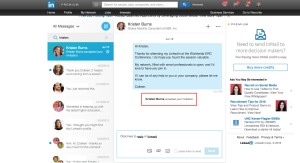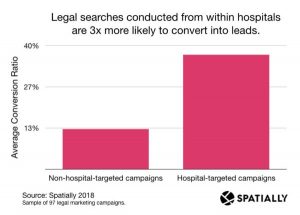
These 12 sales tax tips may not bring you faster cars, better jobs or longer vacations, but they will kick-start your company’s compliance and set you on the right side of tax rules and regulations for 2016.
Each tip was selected by an Avalara sales tax expert, and is designed to help you stay on top of the ever shifting sales tax landscape. Here’s what you need to know to prep for 2016 in regards to sales tax compliance.
1. Don’t Neglect Nexus
Nexus rules are changing. Are you keeping up? Have you sent an agent or sales representative to a new state? Delivered and installed a product in a new state on a regular basis? Did you hire new employees that work from a remote location?
Answering yes to any of these questions may mean that you will have nexus in a new state. Nexus laws are often quite complex and each state is different. Review the laws in each new state where you conducted business. If you have established nexus, check the state’s sales tax laws so that you can accurately calculate, file and remit sales tax as an agent of the state.
2. Straighten up and File Right
E-file in the growing number of states that require it. Each state decides the types of payment options to offer businesses. Some states require businesses with larger tax liability to make electronic payments. On the other hand, some jurisdictions do not have the infrastructure to support electronic payment. Knowing the payment options and requirements in each state in which your company has nexus will help you straighten up and file properly.
3. Pre-Pay to Play
Find out whether you are required to make pre-payments in any jurisdiction. Check the prepayment requirements in your jurisdictions. A number of jurisdictions require prepayment for larger tax amounts. Some prepayments involve a different filing schedule than regular returns, sometimes more than once a month. This means that if you find you are required to make prepayments, and you remit sales tax in multiple jurisdictions, you could end up managing multiple filing schedules. Adjust your calendar accordingly.
4. Recon Your Reconciliation
Make time to reconcile your sales tax payable account with your source documents. Here’s how to do it:
- Identify the balance of your account at the beginning of the accounting period.
- Add the total amount billed to customers.
- Subtract the total sales and use tax paid, either electronically or by check, before timely filing discount.
- Reconcile this amount with the current balance of your sales tax payable account.
- Re-class any discount or rounding balances to the proper general ledger account.
5. Check Checks
Verify that all checks you have issued to the DOR have cleared the bank. While this may seem unnecessary, a misplaced notice from the bank or the Department of Revenue might result in an outstanding sales tax balance.
Be sure to review your process for receiving and sorting incoming documents, especially if you employ part-time staff. Do you know what lurks in that stack of papers or dusty filing cabinet? You should.
6. Familiarize Yourself with Filing Frequencies
Update the filing frequencies on your tax calendars. The beginning of the year is a great time to make sure you know how often you’ll be required to file your sales and use tax returns. Jurisdictions typically send notices to taxpayers several months in advance of their filing frequency changing; however, not receiving a notice does not mean the new filing frequency doesn’t apply.
7. Produce Accurate Product Taxability
Make sure you understand the taxability of new product offerings. Are you offering a new product? What are the taxability laws? Identify the unique laws in each jurisdiction where you have nexus and plan to sell your new product. Moving into a new state? Product taxability laws are inconsistent across state lines — what may be taxable in one state may be exempt in another.
8. Don’t Exile Your Exemption Certificates
Ensure that customers’ tax-exempt status is updated and agrees with the term of their exemption certificate on file. Have any of the exemption certificates you have on file expired? You will need to replace those exemption certificates to continue not charging tax to your customers. If you have changed your company name or acquired a new company, you may need new exemption certificates from all your customers. Check with each of your jurisdictions to find out.
9. Notice the Notices
Have you received any notices from a jurisdiction? Perhaps you filed and paid in a timely fashion, yet the jurisdiction made errors when processing your return and payment. If they do not read your postmark properly or if they apply a payment to an incorrect account, you will receive a notice. Failing to respond to notices in a timely manner may result in a levy to your bank account, a lien on your corporate officers or suspension of your business license so you can’t do business until it is resolved. Notices should not be taken lightly.
10.Zap Those ZIPs
Verify your jurisdictions using exact locations, not ZIP codes. One critical component of determining the correct sales tax rate is ensuring you know where you have liability to collect sales tax. ZIP codes are a web of streets and postal routes that can be divided and changed as areas become more densely populated. Using ZIP codes to determine sales tax rates may prove accurate some of the time; however, using a rate from the wrong jurisdiction or leaving out a special district tax may lead to huge hassles, such as audits, penalties and return reconciliation.
Sales tax rates consist of several layers of tax: state, county, city, local and special district taxes. The number referred to as the total (or combined) sales tax rate is really the sum of those tax rates. Each jurisdiction is defined by a variety of criteria and can vary from one address to the next. It is not unusual to have multiple sales tax rates within a single ZIP code. ZIP codes do not identify which tax region an address belongs to. In fact, ZIP codes do not even designate specific cities. If you base your sales tax rates on ZIP codes, you risk applying the wrong rates and remitting sales tax to the wrong jurisdictions. The key to accurately identifying your jurisdictions is to pinpoint the correct destination or location of the transaction using data such as latitude and longitude coordinates.
11. Happier Audit Trails to You
Ensure that your process for keeping sales records will help, rather than hurt, you in the event of an audit. Sales tax audits strike terror into the hearts of many small business owners. What does an audit make you think of? Painful, protracted dealings with state auditors? Dangerous drains on your business resources? Or do you think of audits at all?
If you base your sales tax rates on ZIP codes, you risk applying the wrong rates and remitting sales tax to the wrong jurisdictions. The current economic climate has increased your chances of being audited. With so many states trying to balance their budgets, they are increasing their efforts to find unpaid tax through audits. Audits can significantly drain business time and resources.
But this is not a message of doom and gloom. If you take the time now to review your process for keeping sales records, it will go a long way toward minimizing your costs in the event of an audit –– and it will help you sleep better, too. When you review your process for keeping sales records, look for the following:
- Clear and complete information: Ledgers that the auditor might want to review include: Accounts Payable (A/P), Accounts Receivable (A/R), General Ledger (G/L), Federal Income Tax Return(s) (FITR) and any books or records underneath those including, but not limited to: Purchase Orders (PO), paid bills, invoices, contracts and customer exemption certificates.
- Easily accessible documentation: If you have the above documentation available or if it can be easily obtained upon request, the auditor will appreciate the cooperation and will require less of your staff’s time.
- Show the flow of each transaction: An auditor must be able to follow the trail of each transaction and match up all of the documents pertaining to each transaction. Watch for items like charge-backs or returns that you may not have adequately documented. First impressions matter. If the auditor sees that you can effectively show what they ask for, you will save money from penalties you might have otherwise incurred for incomplete or incorrect documentation.
12. Automate to achieve awesomeness
Consider Sales Tax Automation. Our final sales tax tip looks at the big picture. Sales tax collection and remittance is not a profit center. It doesn’t make money for your business. Therefore the name of the game is to minimize your risk of an audit while maximizing your efficiency. This will 1) save you significant time and resources in the event of an audit, and 2) allow you to redeploy resources to business areas that actually increase your revenue. More and more businesses are turning to sales tax automation to help them accomplish these goals.
Digital & Social Articles on Business 2 Community(66)








